
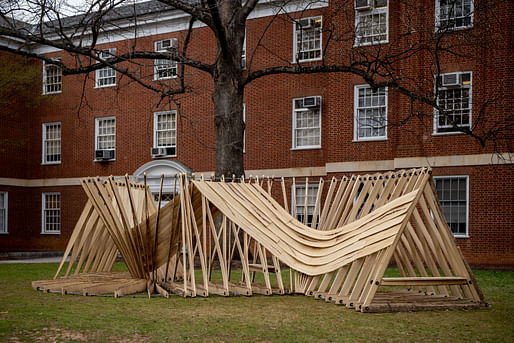
The University of Virginia (UVA) campus has become the showground for an array of creative structures built from natural materials. The Biomaterial Building Exposition (Bio-Build Expo for short) was organized by the university’s architecture school and showcases the possibilities of organic, bio-based materials including salvaged lumber and fungal structures.
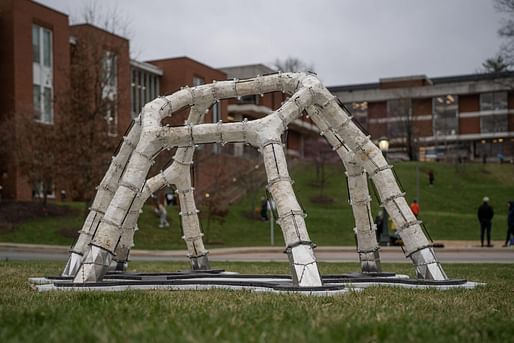
The exhibition, and the projects featured within it, were created by a combination of UVA students, visiting scholars, and biomedical engineering researchers, led by UVA assistant architecture professors Katie MacDonald and Kyle Schumann. “It is both old-school and new-school,” MacDonald said. “A lot of the work we are doing is looking at source material like vernacular architecture — building traditions that are pre-industrialization. But we’re also looking at how new technology allows us to use grown materials in new ways.”
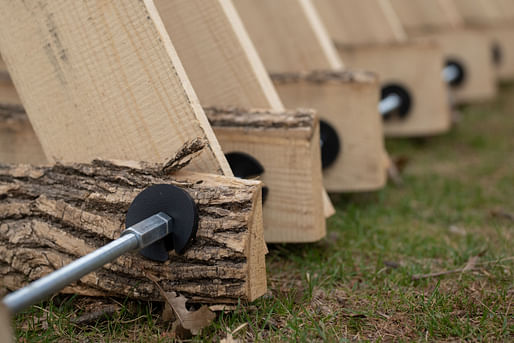
Timber-based projects within the exhibition focused on ways of reusing dimensional lumber such as 2x4 cuts, as well as making full use of lumber logs without excessive waste. One display, created by the HANNAH design studio at Cornell University, sees logs sawn into long, thin pieces weaving across a curved wood structure held together by steel rods and rubber washers.

“There is an unmatchable satisfaction with being a part of the whole design process; from the initial iteration to the prototyping to the fabrication process,” said project member and fourth-year architecture student Abigail Hassell. “I’ve learned that with design-build projects, the tendency is for unexpected issues to arise. With this, I’ve learned that I thrive in situations where I need to rapidly adapt and problem-solve.”
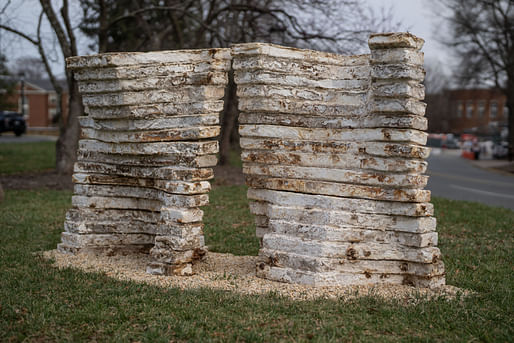
The exhibition also features several applications of mycelium, a fungal structure similar to the roots of plants. One such exhibit was designed by fourth-year architecture student Annabelle Woodcock, who designed and built a mycelium bench which will slowly biodegrade and break down over time, replenishing the soil.
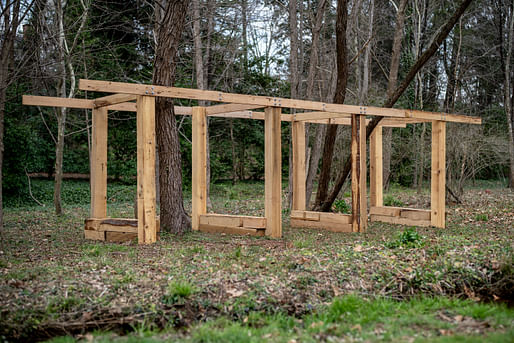
“The outer skin of mycelium can mold to just about any texture that it is grown into, meaning that there are endless possibilities as to what form the material’s surface can take,” Woodcock said. “These naturally occurring invulnerabilities make mycelium an unconventional, yet opportune contestant for a newfound building material.”
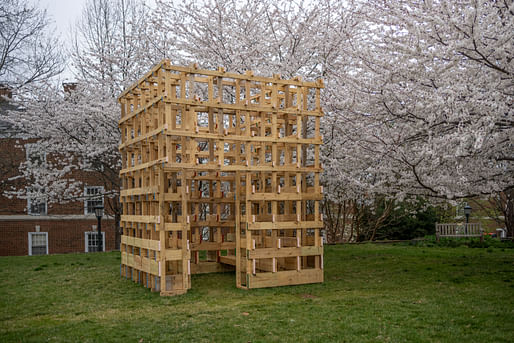
“Why do buildings need to endure for hundreds of years, when we change the language of buildings habitually?” Woodcock continued. “What if we were given the opportunity for continuous readjustment in the built environment according to our current wants and needs?”

The exhibition was supported by visiting scholars from the University of Arkansas, Rice University, Kansas State, Penn State, and Cornell, to work with UVA students. They also connected architecture students with UVA biomedical engineering researchers who are experimenting with growing biomaterial tissue.

News of the exhibition comes days after Jeana Ripple was appointed chair of the Architecture Department at the University of Virginia. Last month, the school also appointed C.L. Bohannon as its first Associate Dean for Justice, Equity, Diversity, and Inclusion.

No Comments
Block this user
Are you sure you want to block this user and hide all related comments throughout the site?
Archinect
This is your first comment on Archinect. Your comment will be visible once approved.